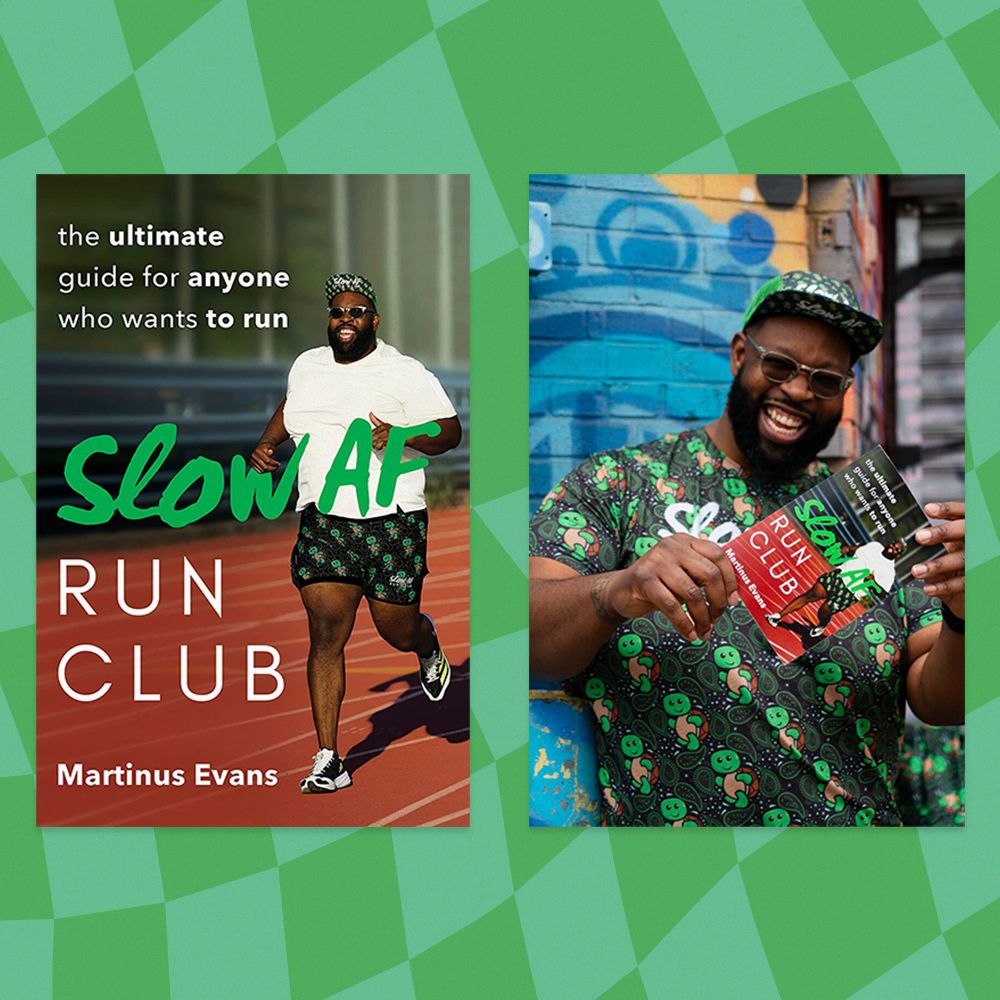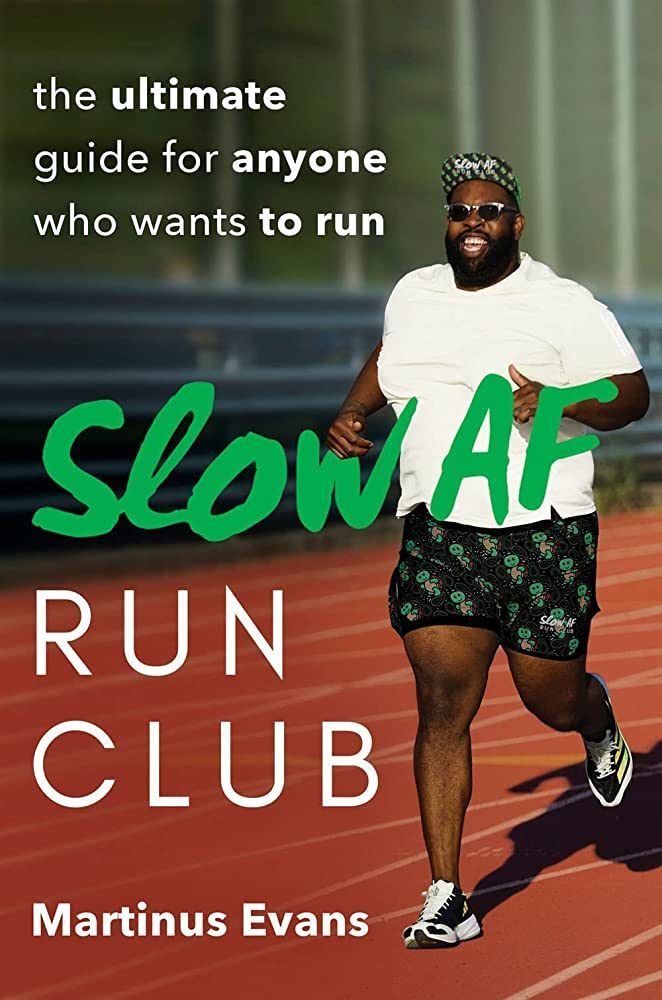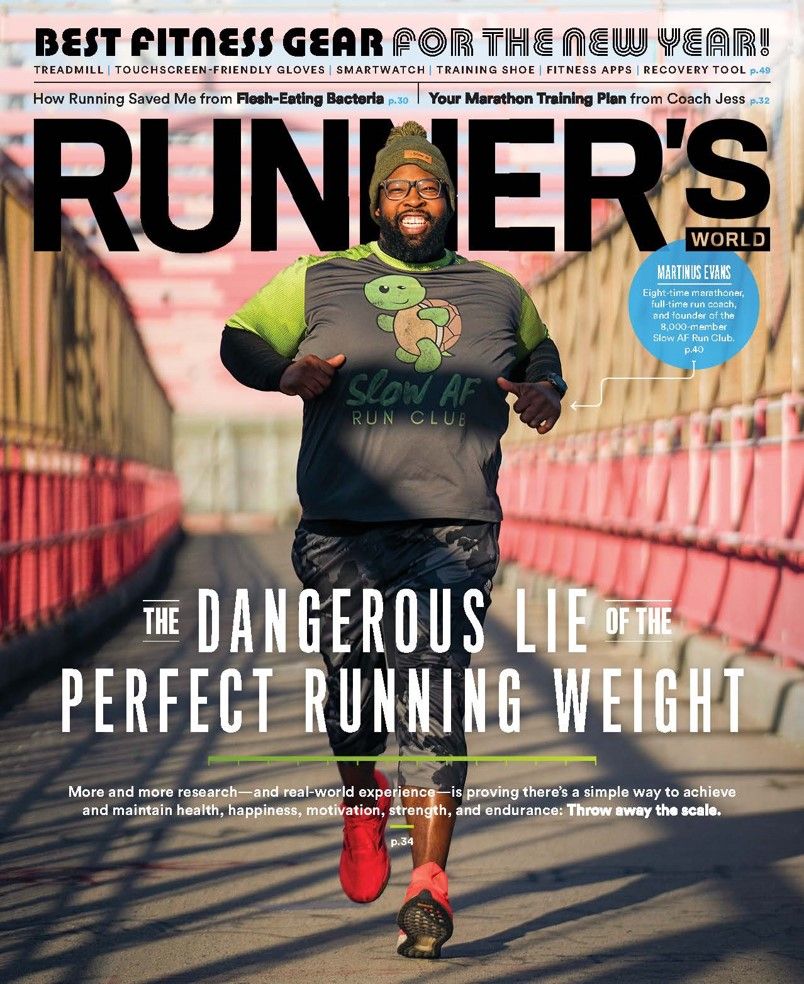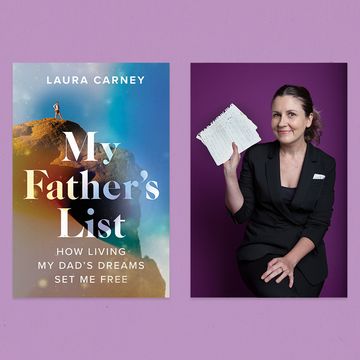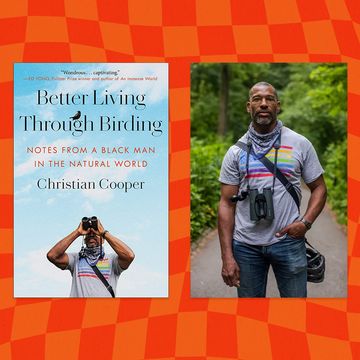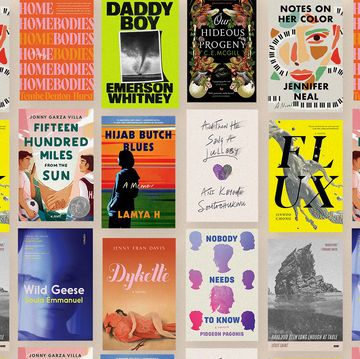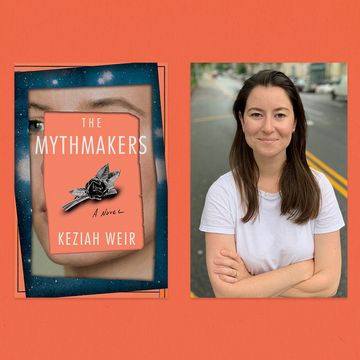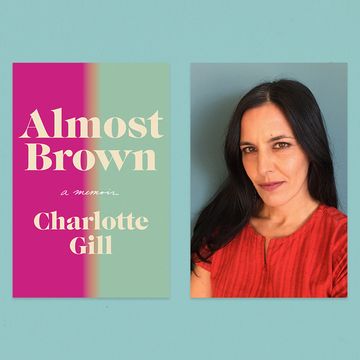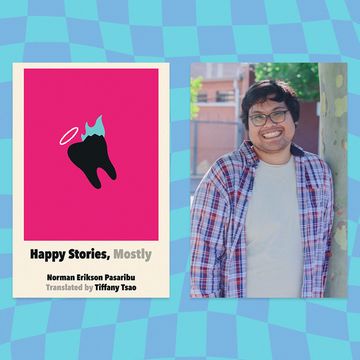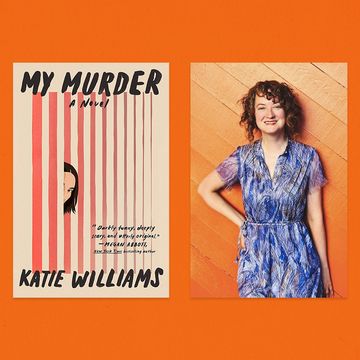Martinus Evans’ running origin story started with a narrow-minded doctor. After being told he had to lose weight or he’d die, Evans retorted that he would run a marathon. And to the doctor’s surprise, he did.
In the U.S. medical system, the emphasis on weight as the only indicator of well-being overshadows any other health predictor. But despite this, Evans did what he said he would. He ran that marathon and dozens more, cultivating joy with movement that had nothing to do with losing weight. He then founded the Slow AF Run Club, a space for people of all sizes and abilities to run on their own terms. Rather than trying to only be fast or achieve what Evans calls an “aesthetic of health,” runners connect with themselves and others, finding a sense of community and beauty in movement totally divorced from weight. Now, Evans has his own book, Slow AF Run Club: The Ultimate Guide for Anyone Who Wants to Run, which is full of stories, training plans, and new ways to approach running.
Shondaland spoke with Evans about decoupling diet culture from physical activity, finding joy in movement, and being part of a journey beyond himself.
SARAH NEILSON: How did this book come to be, and what to you is the importance of broadening the scope of running books away from just the elite athletes who tend to be most represented?
MARTINUS EVANS: One of the reasons why this book started was because in the Slow AF Run Club, I do coaching on a one-on-one basis and on a group-level basis. Many people will ask me, “Martinus, are there books out there that you would recommend that we read while we are training for whatever race?” And most of the time, my answer is no. Most “how to” manuals for running are written by elite athletes, coaches of elite athletes, or former elite athletes telling you how to run like them. And for the people that I encounter, that stuff is not useful. I think about the Jack Daniels’ Running Formula book. Nothing against that book, but in the running community, this book is touted as the crème de la crème and the gold standard when it comes to running. However, if you ever read that book, it’s very dense and very specific to a specific group of people. It does not hit the people that I talk to. It does not provide advice, for example, about not wearing cotton underwear on a run, or for someone thinking, “I’m not going to eat anything because I’m trying to lose some weight while running.” There’s no book out there that says, “Hey, don’t do that. And here’s the story of me doing a somewhat similar thing to show why you shouldn’t do that.” So, with the combination of that, and also reflecting on all of the years that I’ve been running, this book here was pretty much the book that Martinus who started running in 2012 wished he would have had when he started running.
SN: How do you go about structuring and coming up with the training plans that are more for a person who’s not going to be reached by that elite-athlete book?
ME: The beautiful thing about training plans is that they are patterns. But most training plans for beginners, like Couch to 5K … Most Couch to 5K programs assume that somebody can run a 10-minute mile. Here’s why I say that. If you ever did Couch to 5K, you get to week eight, day three, and it’s like, “Run for 30 minutes. Congratulations, you ran a 5K.” I remember going through that experience and being like, “That’s a little bit less than a 10-minute mile. So, are you expecting me to run a 10-minute mile through all of this?” No, that didn’t happen. So, one of the things that I did was assume that individuals are running anywhere between a 17-minute to 18-minute pace when they are running or walking. An 18-minute pace is for some people maybe a brisk walk, but on the running side, that’s a little bit on the slower end. So, I assume that anybody who’s picking up this book or working with me runs at an 18-minute pace, and I work with them at that rate. Now, if they run faster than a 18-minute pace, perfect. The plan still works for you. But if you’re slower and have an 18-minute pace, perfect. At least you got something that’s a little bit closer to what you run than what’s traditionally out there.
SN: Can you talk about the crucial point of decoupling weight from running and sports, and how important that is in shifting the dominant paradigm of running in particular away from the anti-fat bias that plagues it?
ME: The question that I’ve been asking myself for the past 10 years since I’ve been running was what if the answer to America’s health crisis was joy, not shame? I’ve tried all those bad diets, and whenever you bounce to one, somebody else has something to say to it. One of the things that really resonated with me is the question of what if I just took all of the [shame and judgment] away from the way that I live, and just have fun and explore things? I really found out that if you do that, the trillion-dollar industry that we know as the diet culture industry, or whatever you want to call it, wouldn’t be here. And by adding joy, life is just so much better: The grass is greener, the sky is bluer, the birds chirp a lot louder because you don’t have to worry about the comparison or anything else that comes with just joyfully moving your body. There are so many other benefits to regular physical activity other than weight loss. I think that’s the thing that we’ve just lost sight of. So, when the internet diet coach is like, “You need to lose weight because it’s good for your blood pressure and A1Cs and all this other stuff,” I enter the chat and say, “You know what else is also good for all of that? Regular physical activity.” And if we just all participate in this regular, joyful activity, I just don’t think that Concern Trolls will have anything else to play with or troll us on. And one last thing: There’s a difference between having a healthy aesthetic versus actually being healthy. A healthy aesthetic is marketable. You can package that up. You can’t see someone’s A1Cs, you can’t see someone’s blood pressure or cholesterol or things of that sort, but you can see if somebody has fat in their body. And I think that goes down to marketing and capitalism altogether.
SN: Along the lines of the joy of physical activity, can you talk about the ways in which mindset and self-talk are so integral to you? You write about clarifying your values as a human and using that as a way to approach running. What is the power of mindset, and how does that lead to cultivation of inner power that helps you navigate challenges like races and distance?
ME: The beautiful thing about mindset is that once you hone it, you understand that you truly do have the power, and the power is really within. In my book, I mentioned something along the lines of you can look at yourself in a mirror and know that mirror isn’t you. It’s just a reflection. You can look at your thoughts, feelings, and emotions in somewhat the same way. And with that, what I’m saying is that you can then reframe things — losses into wins, etc. When you couple that with what I call the trifecta — values, goals, and habits — you are then able to really see how all of this stuff plays together.
SN: Nutrition is so important to be able to do sports, and it seems really hard to decouple nutrition — especially when it’s related to sports — from diet culture. How do you approach the importance of running nutrition, the importance of personalized nutrition, and being anti-diet culture at the same time?
ME: I would say that it’s very tricky. How I approach it in this book is to state in fact what exactly each thing does. Like, what exactly is a carbohydrate? How does it react in your body? As a coach, one of the things that I try my best to do is to not only train and tell people things but also empower them to let them know, “Hey, this is what these things are for.” That’s the first thing that I try to do — empower people to know what exactly these building blocks are. What are the things that you’re reading on the back of these labels? What is a carb? What is a fat? What is a protein? And why are all these things important in your body and everyday living? I think that’s the first step. Part B is getting people to understand there’s this thing called a basal metabolic rate. That whether you know it or not, you’re burning calories just living. And then once you get beyond that, it’s really about helping people understand what specific things are useful for in a performance setting. What are some of the things you may need before you go for a run? Yes, carbs are a building block of energy. So yes, you’re going to need carbs. Carbs are good, they’re tasty, and they’re good for you. Your body needs that. And really get them to understand the power of timing when it comes to running on a performance basis. The tricky thing is when you have people that are going through various journeys in their life. Like for a bariatric patient, for example, one of the things I try my best to do is to bring in somebody else that also has a little bit more experience than me, because I’m not a nutritionist, but I’m willing to go on this journey with you if you would like me to, or we can find somebody to go on this journey with us. But it’s really about understanding the basics, which is useful in helping us break away from the diet culture because I think the thing about diet culture is that they form an enemy [out of foods].
SN: You write about how historically, and in your own experience too, it can be a struggle to find running groups that are actually inclusive and accessible for people. Can you talk about the importance of a running community, how you see it changing, and how you are part of that change?
ME: When I started running, I ran alone. Trying to find these crews, when you think you find one, it’s always a big letdown. So, I typically just found myself running alone. And I have been to multiple places. I’ve stayed in multiple states, and there’s always a community or club that’s like, “Hey, we are inclusive,” even though they’re not. “Inclusivity” right now is catchy and a buzzword, and I think everybody wants the positive kudos or the positive light that comes with being inclusive. It’s almost like diet culture is starting to co-opt inclusivity as well. I want to make sure that I’m providing people with actual safe space.
One of the ways that I think about hosting the community and being the leader of Slow AF Run Club is I try to think of this thing as a party, and I’m a host. As the host of the party, you’re trying to make sure that there are connections amongst people. You’re trying to make sure that everybody is taken care of and everybody’s having fun. And since this is your party, you want people to go out and rave about and be like, “Man, you missed Martinus’ party. You should go to the next one.” That’s how I think about Slow AF Run Club, and I think that’s one of the reasons why we are successful. When you think about running crews and running clubs, historically it was just a bunch of old white dudes just running. They used to think if women ran marathons, their uteruses would fall out. Then it became, “Okay, it’s only us fast ones because if you’re too slow, you might croak out.” And then slow people started running. So, it’s a very slow transition when it comes to running, but it’s happening because they have no other [excuses]. And I think we as consumers are really understanding it and standing up to say, “If you don’t support us, then we’re not going to support you.” My prediction is that if races don’t adapt to this new way of thinking, they’re going to slowly die off. And they’re not going to see numbers that they were seeing pre-pandemic because people are starting to understand that they have other races or places they can go where they are celebrated versus being tolerated.
SN: Over the past few years, you’ve been featured in Runner’s World and Men’s Health, you have this new book, and your club has been really successful. How has your relationship to running changed over that time?
ME: I was just talking to my friend about how running is starting to be this business, and I need to make running fun for me again. So, it has evolved, and I am grateful and humbled that I took a journey, that a doctor called me fat, and I started to run and document it and be able to do all this amazing stuff that I didn’t expect. But it’s made me think about myself as an individual who was in the sport, wants to have fun, but also wants to make change. This journey, as I want it to be, is no longer about me. It’s no longer about this 300-pound Black man who ran. It’s more about the other people who are also out here who want to do it. One of the things that I’m actually in the process of doing is launching a nonprofit for the Slow AF Run Club called the Slow AF Run Foundation. One of the things that we plan on doing there is just making running more accessible for everybody around the world. Our goal is to get 1 million people to start running in a body that they have right now, and providing them with all of the tools and access to get there. With this book and this journey, I’m just really grateful to be a conduit. To let people know “You can do this; you will do this.” I’m quite excited to see what this really turns into. I really don’t want to make it more about who I am; it’s more about this larger mission and what that means for everybody else who joins and becomes a part of this mission.
This interview has been edited for length and clarity.
Sarah Neilson is a freelance culture writer and interviewer whose work regularly appears in The Seattle Times, Them, and Shondaland, among other outlets. They are an alum of the Tin House craft intensive, and their memoir writing has been published in Catapult and Ligeia.
Get Shondaland directly in your inbox: SUBSCRIBE TODAY
